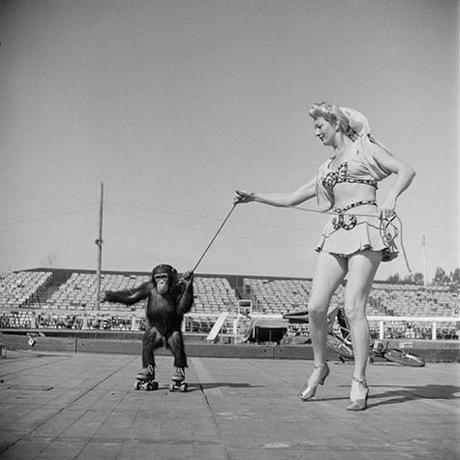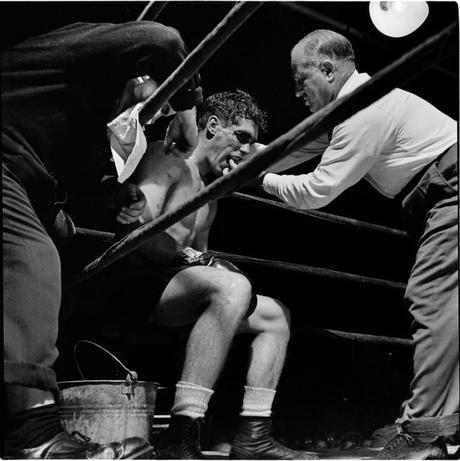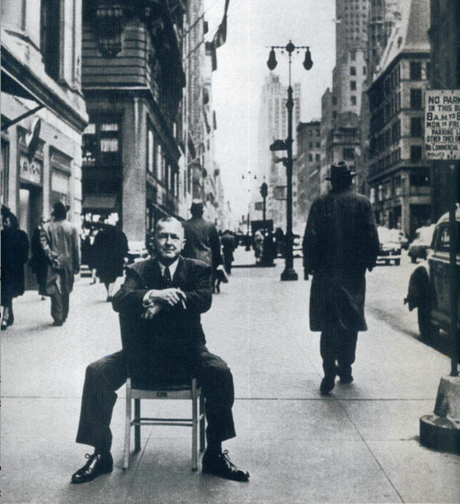
The dazzling but relatively straightforward speed by which the American Grossstadt, New York City, was beginning to call for an image of agglomeration other than a strictly architectural one—a scene, a spectacle, a stage set, a backdrop—pales when compared to the extraordinary international transactions involving the top Nazi procurers, which would peak in 1941-1942.
All these dealings involved a large quantity of cash. Through a steady flow of hundreds of thousands of reichsmarks, the German dealers tried to buy art pictures in a narrative of philistinism, greed, and heroism; their American counterparts, born entertainers and fueled by equal parts of entrepreneurial energy and archival zeal, decided instead to enhance the experience of sport or, to evoke a Freudian problematic, its visibility. So the feat of a continental collector would have been suitably celebrated in a cabaret-restaurant, with orange duck, a number of faked smiles, and a little Moët. But a great moment in Yankee sportmanship would assert itself with a bird’s-eye view, making it possible to assess its effects. A painting of Leda and the Swan is best appreciated keeping at a distance the seemingly agitated and uneasy, while the proper account of a baseball match relies on the very denseness of the company around. The crowd, in one of the newly erected sport arena of the U.S., functions like the mob characteristic of large nineteenth-century cities, which is, quite often, the asylum for the reprobate or—to cite Benjamin on Baudelaire—the silent consort of the flâneurs.

To recollect these social types one does well to read detective and crime stories, or else to reflect how Coney Island’s successful “montage of attractions” served as an incubator for the mythology of Manhattanism—a perpetual amusement park of artificial landscapes, social spaces of unmatched rigor, and tight bedrooms all linked by elevator. But New York in the 1940s has also trained the gaze of Stanley Kubrick, while he was still a poor boy from the Bronx doing photojournalism for Look magazine, with its squares and towers by the plunging view, the maquette, the relief plan.

Kubrick’s eye began to crystallize at the time in which the swastika familiarized with the warehouse and the dollar bill—its S traversed by a vertical line, its “green” recto and verso—started circulating as the perfect graphic equivalent, stunningly successful, of its mother-country. It was the age of carefully constructed ‘perspectives’, displaying or abstracting the city’s interior in all manner of belvederes and terraces, elevated trains, and before long, soccer stadiums. An affair of ethics had become a matter of aesthetics. And for the mind, to take in the full force of reality, it would be necessary to enlist the help of a P.T. Barnum type, with his gorgeous, vernacular impertinence, his heavy equipments, his sheer vulgarity. Barnum always knew how to liberate the masses from the grey morass of social security cards, notarized papers, tax filings, administrative questionnaires of all kinds; at one point, he also became interested in the possibilities of soccer, as a game, to allure a crowd into the steel-girdered structures of his itinerant exhibitions.
In 1983, when the National Mall in Washington, D.C., was transformed into a boardwalk (New Jersey being the featured state) with the erection of an oil derrick, a rodeo ring, and a cattle barn, the visitors explored that repository of collective taste by walking through an area that not only roughly resembled a soccer pitch, but was, in fact, a soccer field.

Regarding boxers, Kubrick’s judgement is a matter of record and, almost, fingerprinting—like the subtle relationships between recto and verso in the dollar bill. In this sense, the ring marks a singular advance in the deconstruction of the binary opposition between self-defense and barbarism. Elbow-to-elbow with his coach, and sweating, the boxer seems absurdly miserable, like a beaten BMW patrolling the Berlin Wall on Bernauer Strasse in the 1970s. He spits into the bucket, flooded by limelight, the way a brass plate recedes into the past of a modern state. Kubrick’s camera is several feet high, capturing the boxer’s muscles like a Greek chevaux, scattered in marble pieces across the frieze—in a fog-gripped visit to the Pergamon Museum.

It’s not clear to what extent Kubrick’s portrait of Georg Grosz, shot in 1948 for the June 8 issue of Look, is a direct illustration of the German method of directors such as Fritz Lang and Max Ophuls. A chair on the sidewalk along Fifth Avenue displays irony, for sure, but also a nod to the ancient trade of hotel-keepers, counterfeiters, and entertainers whose social agency is forever stored, in green and red rows of seats, amidst the noisy, chattering, impudent, loud-mouthed, chain-smoking, garish throng of a Sunday match. This is, perhaps, the unexpected verso-side of Kubrick’s early photography, with its forays into sportsmanship: an attitude of Americans toward the arts—a democratic nation, which, as Tocqueville observed, “will cultivate the arts that serve to render life easy in preference to those whose object is to adorn it.” ♦

